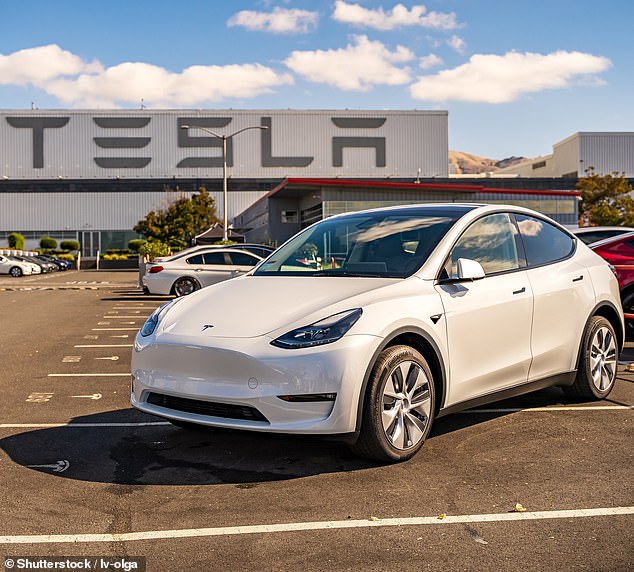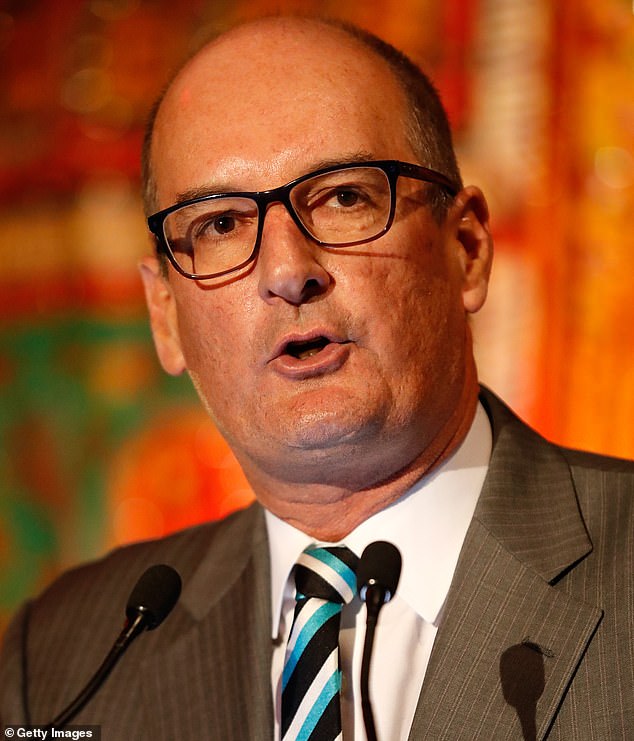David Koch has warned that the cost of insuring and repairing electric cars is skyrocketing compared to petrol vehicles, as electric vehicles continue to gain popularity in Australia.
Chinese-made electric cars have entered the market alongside established brands like Tesla and driven down the cost, and the country is on track to hit a record sales of 100,000 electric vehicles this year, according to the Electric Vehicle Council.
The showroom price might be enough to convince buyers to make an environmentally friendly decision, but, in the future, electric vehicles could burn a huge amount in their owners’ wallets, as insuring an average electric vehicle costs 43 percent more than a gasoline car.
Data from Compare the Market looked at insurance premiums for the five most popular electric vehicles alongside similar petrol models from Toyota, Audi, Hyundai and Mazda, using the example of a 34-year-old Brisbane man with a good driving record. .
“On average, across the 12 insurers studied, it is between seven and 97 percent more expensive to cover the five best-selling full electric vehicle models compared to a similar gasoline model,” said Compare the Market economic director, David Koch.
The biggest difference was between the popular Tesla Model Y RWD, which costs an average of $3,434.98 per year to insure, and its SUV rival, the Toyota RAV4 Cruiser 2WD, which costs about half as much to insure at $1,744.95 per year.
For a sedan, insuring the Tesla Model 3 RWD costs on average $3,888.55 a year, while an Audi A3 costs $2,101.04.
Among the cheapest electric vehicles to insure are, perhaps surprisingly, some of the newer Chinese models, such as the Zeekr Similar gasoline SUVs.
David Koch (pictured) warned that while electric vehicles are becoming cheaper, on average they cost much more to insure than gasoline cars.
Koch said electric vehicles were generally more expensive to insure because repair shops were much less equipped to handle them compared to traditional gasoline vehicles.
“This is because the battery pack creates more complexity for repairers, many EV-specific parts must be imported from overseas and there is a skills shortage with fewer qualified electric car repairers in Australia, contributing to delays in deliveries. repairs and inconveniences for owners,” he stated.
“In the UK, we have already seen some insurers refuse cover for certain Chinese-made models due to allegedly insufficient parts availability, almost non-existent repair information and a lack of knowledge of how the European repair market works. “.
Koch said hybrid vehicles were also more expensive to insure – about 5 percent more than comparable gasoline models – but that the real difference was in fully electric vehicles.
He said that while electric vehicles are more expensive to insure, the savings on running costs, such as fuel, can offset this over time.
Koch suggested that insurers could offer discounts for “green cars” to specifically encourage buyers to opt for environmentally friendly options.
Some banks already offer similar discounts on auto loans.

Tesla has dropped the price of its Model Y (pictured) in Australia three times since March and its base model now costs just $55,900 before on-road costs – a discount of $13,000.
The Electric Vehicle Council said: “The reality is that electric vehicles remain cheaper to own and use than petrol cars, reduce air pollution and are essential to reducing carbon emissions.”
“We need to see the electric vehicle market grow to meet our climate goals – the National Vehicle Efficiency Standard will play a vital role, but there is much more to do to reduce the country’s transport emissions.”
Australia’s New Vehicle Efficiency Standard has been approved by federal parliament and will apply to new cars sold from July next year.
The rule regulates a limit on manufacturers’ fuel emissions for their new cars in an effort to help achieve net zero emissions by 2050.

